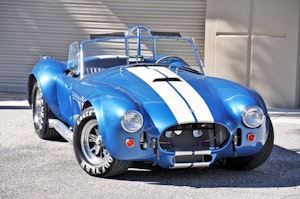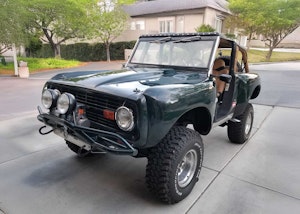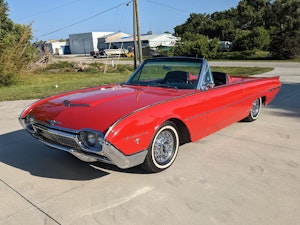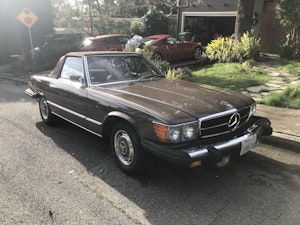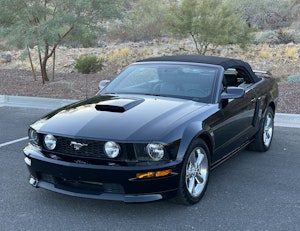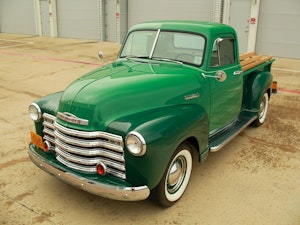Racing with the past
The changing face of vintage racing
GO TO ANY VINTAGE RACE on any weekend and you’ll see race cars big and small, some with engines up front and others with them out back. Painted in every hue, the variety is great, with Sprites racing against tiny hunched-looking Fiat-Abarths, or Boss 302s flank to flank with Z/28s and Challengers. The sounds also differentiate the cars. Big V-8s bellow and tiny fours scream, while it’s easy to pick out the flat-six of a Porsche or a Ferrari’s V-12.
THE SEEDS OF A SPORT
Vintage racing in North America has changed over the last 40-plus years, and it is still changing. By all accounts, in the U.S. the sport was first seeded in 1949 on opposite coasts. In Bridgehampton, New York, collector, enthusiast and historian Henry Austin Clark mounted a demonstration of vintage sports cars at a Sports Car Club of America (SCCA) event. Meanwhile, orange grower and car collector Lindley Bothwell organized a vintage race at the Del Mar, California, horse track; the entire field came from his substantial collection and was piloted by top drivers and friends.
One of the earliest organizations to focus on racing older machinery was the Vintage Sports Car Club of America (VSCCA), founded in December 1959. Largely established for racing and road rallying, its track events were usually sanctioned by the SCCA and included grids at SCCA race weekends. Second-generation VSCCA member Sandy Leith remembers the early days. “The club would rent Thompson [Connecticut] Raceway from [owner and club member] George Weaver for $50.” According to Leith, those first races had fields of between seven and 10 cars.
In those fledgling days, vintage racing clubs were scattered around the country and were largely isolated from each other. Early on, there was a Midwestern chapter of the VSCCA, but it soon split off as the Vintage Sports Car Drivers Association (VSCDA).
Marketplace
Buy and sell classics with confidence
Through the 1960s, VSCCA races continued to be sanctioned by the SCCA. Meanwhile, in California, the Classic Sports Racing Group (CSRG) formed in 1968 and began with informal meets that were more track day than race day.
During the 1970s, the VSCCA began sanctioning its own races, and vintage racing in general began to come of age, especially with the advent of General Racing’s Monterey Historics, which was first held at Laguna Seca in 1974 as part of Pebble Beach Week. In just a few years, the event — now run by the track itself — became the standard by which other vintage race weekends were judged. Auto manufacturers soon began injecting vast sums into the Monterey Historics, which helped it, and vintage racing in general, grow rapidly.
The 1970s continued a period of increased interest in vintage racing, with the founding of the Historic Motorsports Association (HMSA) in California in 1977 and the start of the Sportscar Vintage Racing Association (SVRA) in Florida four years later.
By 2000, there were approximately 30 vintage racing sanctioning bodies in the U.S. With few exceptions — such as General Racing — they were volunteer-based. They were also regional, with the VSCCA in the Northeast, along with Vintage Racer Group (VRG) in Pennsylvania and New Jersey, the SVRA migrating to the Northeast, the Historic V-8 Racers Association (HVRA) in the Midwest, Rocky Mountain Vintage Racing (RMVR) in Colorado, Corinthian Vintage Auto Racing (CVAR) in Texas, the Society of Vintage Racing Enthusiasts (SOVREN) in the Pacific Northwest and HMSA in California, along with other small regional clubs/sanctioning bodies, sometimes running a single event, like Michigan’s Waterford Hills Road Racing (WHRRI).
The non-profit, club-based model worked well, but as with most clubs, relatively few volunteers did much of the work. These regionally based clubs attracted new racers, partly due to strong driving schools and programs that helped, literally, get novice drivers up to speed.
Depending on where they lived, many drivers found themselves running with a few different clubs. In the east, a racer might run with the VSCCA at Lime Rock and the VRG at Summit Point or Watkins Glen, and in the west, for years there was General Racing at Laguna Seca and the Classic Sports Racing Group (CSRG) running events at Infineon Raceway and Thunderhill Raceway Park, and HMSA at Portland, Thunderhill and, now, Laguna Seca (sanctioning body only). In other words, most racers and sanctioning clubs stayed relatively near home, with occasional ventures from familiar turf, particularly for drivers contesting a regional or national championship.
A GROWTH BUSINESS
Into the 1980s and through the 1990s, vintage racing increased in popularity, with more drivers and spectators turning out than ever before. Circuits such as Lime Rock, Watkins Glen and Road America organized vintage festivals, with racing, car shows, track tours, car club parking and more. When new tracks such as the Barber Motorsport Park (2003) and New Jersey Motorsports Park (2008) were completed, they also offered additional venues for vintage racing. Existing sanctioning bodies — along with the Vintage Racer’s Group, which emerged in 2004 — ensured that vintage racers had a choice of many race weekends throughout the year.
Meanwhile, serial entrepreneur and Corvette collector Tony Parella discovered vintage racing and loved it. Having turned around several companies, he soon began to think of ways to improve vintage racing. In 2012 he formed Parella Racing LLC, which acquired SVRA that September. At the time, the club was sanctioning five races in the east at New Jersey Motorsports Park, Watkins Glen and Virginia International or Pocono. By working with other tracks and partnering with a variety of vintage racing clubs throughout the country, SVRA expanded to 15 races in 2014 and 18 for 2015, with tracks from Sebring to Indianapolis and Portland, and from Circuit of America to Watkins Glen. For 2016, there will be 16 events — either promoted by SVRA or sanctioned jointly with another club — all at different tracks, making SVRA the first truly national sanctioning club for vintage racing.
Membership has also grown; SVRA has 2,500 licensed racers who combine for total annual race registration of roughly 5,000. According to SVRA communications director Pam Shatraw, most members run with the SVRA at least once a year. Many also run with other vintage racing clubs offering events in their regions. Race weekends generally consist of practice on Thursday and racing on Friday, Saturday and Sunday, as well as a Saturday night dinner and concert followed by fireworks.
Although SVRA weekends are designed as entertainment for the entire family, race groups (12 in the SVRA’s case), accommodate everything from small-bore cars like Formula Juniors, Sprites and Spitfires up to Formula 5000, IndyCar, Trans Ams and FIA GT cars.
AN ENTIRE SPECTRUM
Whether it’s running an MG Midget on a shoe string or racing an immaculately prepared and supported historic Indy-Car machine, with roughly 30 vintage racing clubs and special interest groups (see the-vmc.com), there are dozens of race weekends throughout the year and around the country. Now that you know how to find the vintage races closest to you, there’s no reason not to turn out to watch the action or dust off the old race car sitting in the corner of your garage and become part of the grid.
20170725115301)
